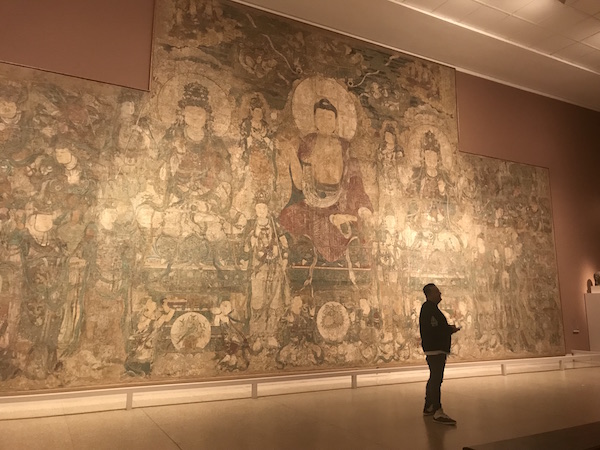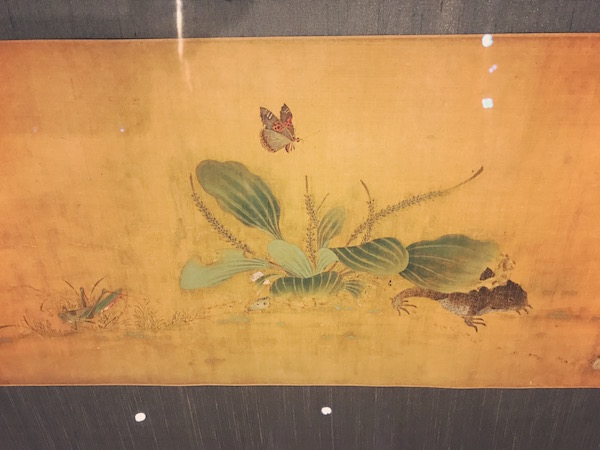The Yuan Dynasty was perhaps one of the most culturally intriguing periods in Chinese history, as it was the first time that the country had come under foreign rule. While the Han Chinese had traditionally depended on Confucian principles and bureaucracy, the new Mongolian rulers advocated an authoritarian, feudal military administration. It was an era of cultural discrepancies, where China’s native ethnic groups frequently locked horns with their non-Chinese rulers. However, in many ways the Mongolians were an open-minded people, and many of the reforms they made during this period helped to facilitate positive cultural change.
They did not try to impose their own folk religion on their subjects, which gave comparative freedom to the plethora of religions that existed throughout China. In particular, the three major religions of Taoism, Buddhism, and Confucianism began to interact in new and interesting ways. No longer were they mutually exclusive, as many members of the literati advocated the philosophical and intellectual amalgamation of the three schools. However, the abandonment of the traditional Confucian imperial examinations during the early Yuan Dynasty proved to be a devastating blow to the religion.

Kublai Khan, the founder of the Yuan Dynasty, favoured the Tibetan branch of Buddhism above all others and established it as the state religion. While the intellectuality and elegant aestheticism of the Chinese Chan (Zen) sect of Buddhism did not appeal to the Mongolians, they were fascinated by the magical practices and profound symbolism of Tibetan Buddhism. In many ways, it resembled their own shamanistic[1] and animistic[2] faith.
Other foreign religions, such as Islam and Christianity, also found a strong foothold in the country during this time. Numerous Muslims from Central Asia, who were sent to live and work in China by the Mongol imperials, introduced Middle Eastern cartography, astronomy, medicine, and clothing into the country. They also successfully popularised crops such as carrots, turnips, eggplants, melons, granulated sugar, and cotton.
In fact, the sheer magnitude of the Mongol Empire and the unprecedented levels of international trade that took place during the Yuan Dynasty meant that, for the first time, China was firmly connected to continents as far-reaching as Europe. Kublai Khan regularly welcomed foreign visitors to the imperial court, the most notable of which was the Venetian merchant Marco Polo. His description of his trip in The Travels of Marco Polo became the most influential European account of Yuan China in history. His writings would later inspire other would-be adventurers, such as Christopher Columbus, to sail to the Far East in search of its legendary wealth.
Yet arguably the greatest cultural achievement during the Yuan Dynasty was the development of literature in the vernacular language. Literature in previous dynasties had been dominated by the Han Chinese scholarly elite, who insisted that all written works follow rigid forms and discuss certain approved ideologies. This all changed during the Yuan Dynasty, since the Han Chinese rarely held positions of official authority and therefore no longer wielded the kind of influence they had once boasted.
Novels and stories began to be written for the amusement of a wide-reading public, rather than simply for the intellectual enjoyment of a privileged and educated few. In particular, dramatic literature reached its peak and the Yuan Dynasty is commonly regarded as the classical age for operatic arias. The clientele for this sort of colloquial literature tended to be among the merchant and artisan classes, resulting in the emergence of a sort of bourgeoisie.

Art also experienced a somewhat drastic evolution thanks to the paintings of Zhao Mengfu and his contemporary Qian Xuan. Rather than continuing the tradition of Song Dynasty (960-1279) painters, their style borrowed a variety of features from a wide range of past traditions. Abandoning the naturalism of the Song style, their paintings had a deliberate awkwardness and were highly stylised.
Oftentimes they were designed to conceal personal and political motives. They were meant solely for the enjoyment of the educated elite, who were the only ones capable of identifying their stylistic references or unpacking the subtle allusions to their real subject matter. Zhao’s innovative approach eventually became the inspiration for the landscape painters Huang Gongwang, Wu Zhen, Ni Zan, and Wang Meng, who are nowadays known as the Four Masters of the Yuan Dynasty. The styles of these four masters would eventually become the most influential of all painting forms in later Chinese history.
[1]Shamanism: The practice of attempting to reach altered states of consciousness in order to communicate with the spirit world and channel energy from it into the real world. This can only be done by specialist practitioners known as shaman.
[2]Animism: The belief that all non-human entities, including animals, plants, and even inanimate objects, possess a spiritual essence or soul.